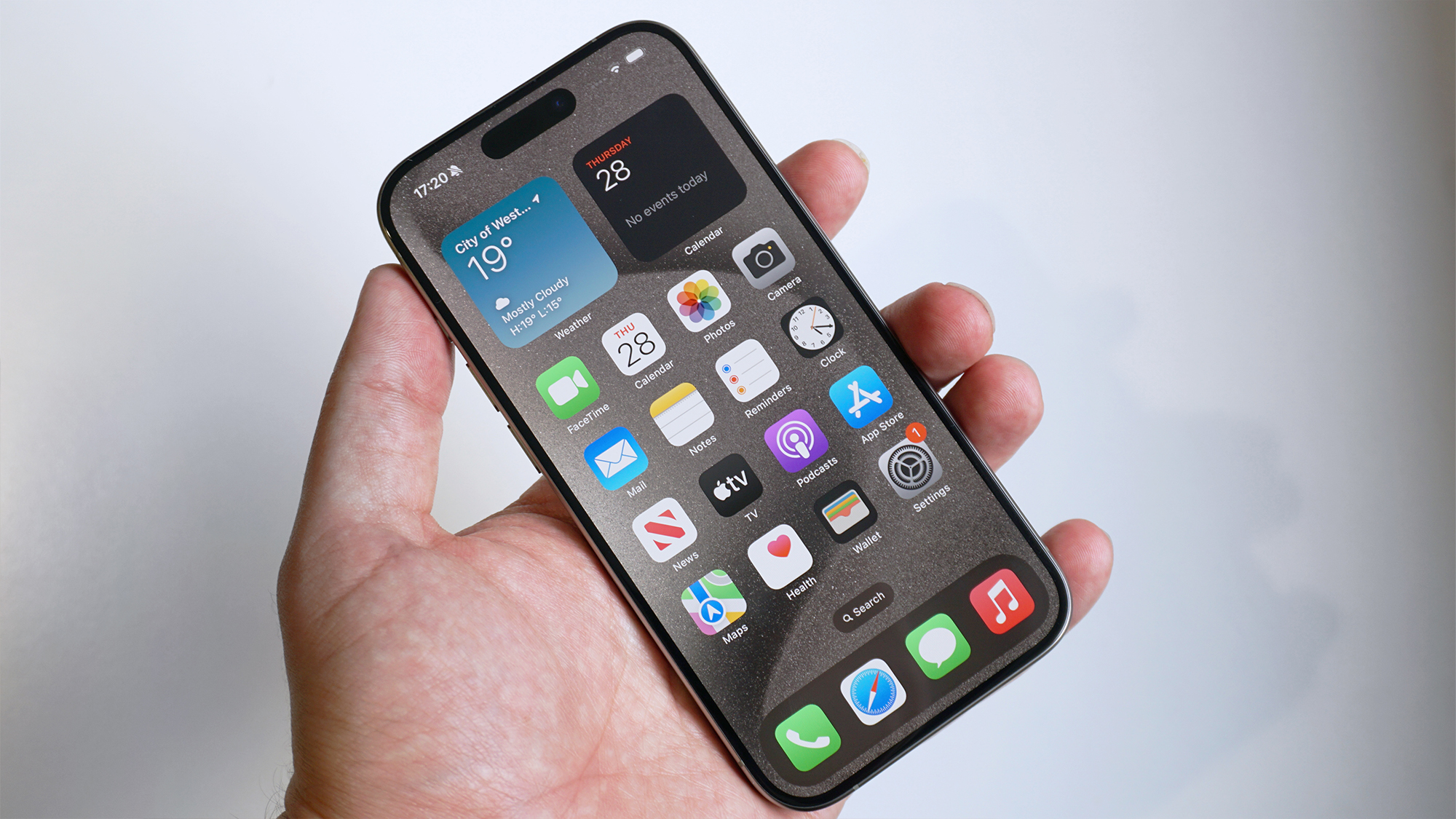The iPhone 16 Pro might have a bigger screen, better cameras, and faster data
Big upgrades for the Pro and Pro Max

We’ve heard a surprising amount about the iPhone 16 line considering that we’re not expecting them for almost a year yet, and now a reputable analyst has shared some detailed predictions for these phones, giving us even more of an idea of what to expect.
According to Jeff Pu of Haitong International Securities, in a note to investors seen by 9to5Mac, the iPhone 16 Pro and iPhone 16 Pro Max could be substantial upgrades on the iPhone 15 Pro and iPhone 15 Pro Max.
For one thing, both phones will apparently have a new 48MP ultra-wide camera, up from 12MP on the current models, and both will also apparently have 0.2-inch larger screens than their 6.1-inch and 6.7-inch predecessors.
More power and speed
Additionally, both phones are unsurprisingly said to be powered by an A18 Bionic chipset, though the RAM amounts will apparently remain at 8GB, like this year’s models.
Pu also claims that the iPhone 16 Pro and iPhone 16 Pro Max will have a new Snapdragon X75 modem, capable of 5G speeds of up to 7.5Gbps, and that they will support Wi-Fi 7, allowing for Wi-Fi speeds of up to 46Gbps.
Neither of those speeds are likely to be achieved on current carriers and ISPs, but this does mean you might get higher speeds than the current iPhones are capable of, on both 5G and Wi-Fi.
Finally on these phones, Pu claims that the iPhone 16 Pro will get the 5x optical zoom camera that’s currently an exclusive to the iPhone 15 Pro Max. This is reportedly due to the slightly larger size of the phone, as there apparently wasn’t space for this camera on the iPhone 15 Pro.
Sign up for breaking news, reviews, opinion, top tech deals, and more.
Don’t expect any upgrades to the zoom on the iPhone 16 Pro Max though, as both Pro models will reportedly get the same 12MP 5x optical zoom camera as the iPhone 15 Pro Max.
Extra RAM for the iPhone 16
Pu also made some predictions about the standard iPhone 16 and the iPhone 16 Plus, saying that these two phones will have just a dual-lens rear camera, and that there won’t be any upgrades to the ultra-wide lens, meaning this will remain at 12MP and lack the macro mode of recent Pro models.
The main camera isn’t mentioned, but as this had a big upgrade to 48MP this year we wouldn’t expect any substantial changes to that either.
Pu does note that the iPhone 16 and iPhone 16 Plus will apparently have an A17 Pro chipset though, as seen in the current Pro models. That’s expected given that Apple has taken to giving the standard models the same chipset as the previous year’s Pros.
However, they’ll reportedly get a RAM upgrade, moving from 6GB to 8GB, and will be upgraded to Wi-Fi 6e. But that will still see them trail the iPhone 16 Pro and Pro Max for Wi-Fi speeds if the latter phones support Wi-Fi 7, and they’ll also fail to match the Pro models for 5G speeds according to Pu, as apparently there won’t be any changes to the 5G modem.
It’s worth noting that many of these details have been mentioned before, by Pu and others, but there are some new details, including the data speeds and RAM amounts. However, it’s also extremely early for iPhone 16 information, so we’d take this with a healthy helping of skepticism. The details may well be wrong, and even if Apple is considering these things, this could all be subject to change.
We probably won’t know for sure what these phones offer until September 2024, as that’s when the next iPhones will probably land. But with the iPhone 15 line only just having launched, there are loads of new options anyway if you’re looking for one of the best iPhones.
You might also like
- iPhone 16: release date speculation, latest leaks, price predictions and more
- iPhone 15 Pro review: pocket paragon
- iPhone 15 Pro Max review: the best just got better
James is a freelance phones, tablets and wearables writer and sub-editor at TechRadar. He has a love for everything ‘smart’, from watches to lights, and can often be found arguing with AI assistants or drowning in the latest apps. James also contributes to 3G.co.uk, 4G.co.uk and 5G.co.uk and has written for T3, Digital Camera World, Clarity Media and others, with work on the web, in print and on TV.